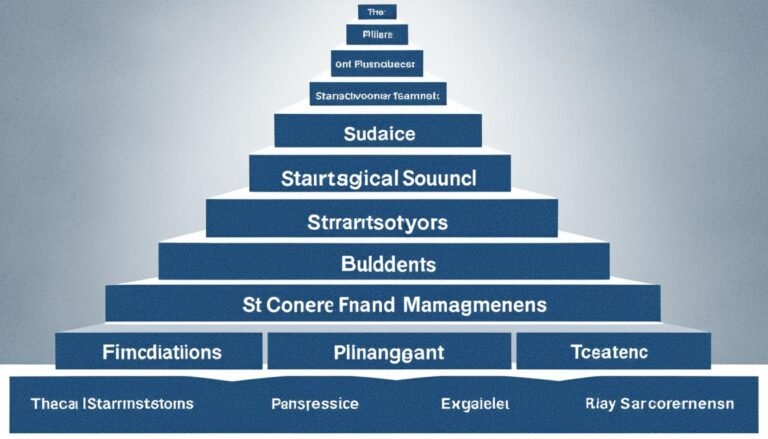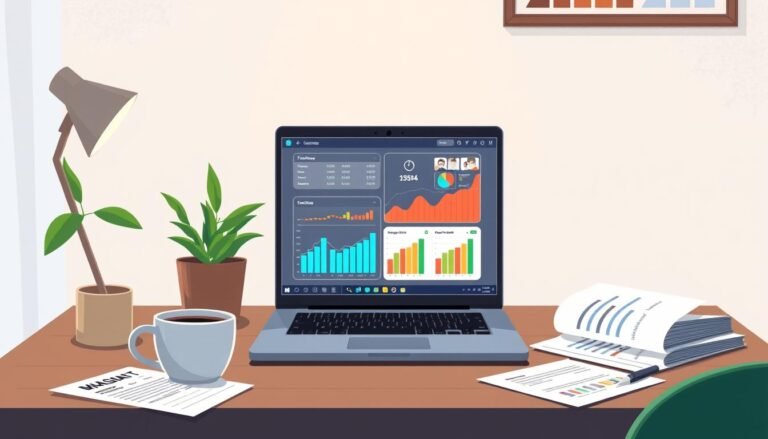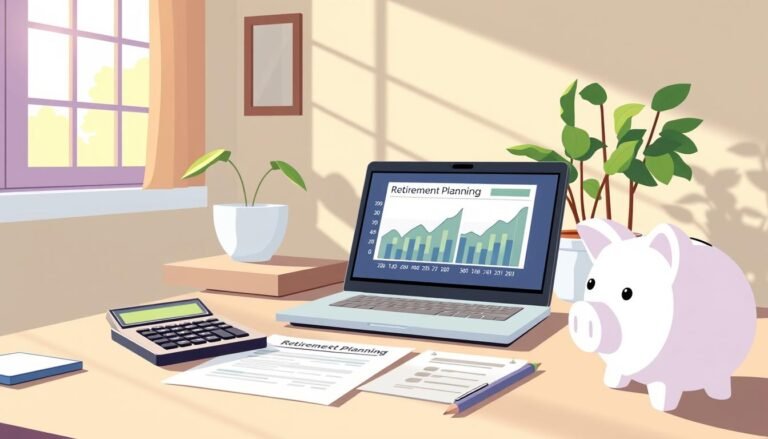Impact of Inflation on Personal Finances
Inflation has become a big topic lately, with rates hitting 9.1% in June 2022. By October 2024, it had cooled down to 2.4%. But, the worry about inflation’s impact on our money is still there. It affects everything from what we buy daily to our long-term investments.
Knowing how inflation works is important for managing our money well. It’s not just about prices going up. It’s about how these changes affect our financial choices. From our grocery bills to our retirement plans, inflation impacts our lives in many ways.
Economic trends show that inflation isn’t just a short-term issue. It’s a lasting problem that needs constant attention and planning. By understanding inflation, we can protect our money better and make smart choices about saving and investing.
Key Takeaways
- Inflation rates fluctuate, reaching 9.1% in 2022 and settling at 2.4% in 2024
- Personal finance management strategies must adapt to inflationary pressures
- Inflation affects purchasing power, savings, and investment decisions
- Understanding economic trends is crucial for financial planning
- Regular budget adjustments help mitigate inflation’s impact on personal finances
Understanding Inflation Fundamentals
Inflation is key to our economy, impacting everything from food prices to how much money we can make. Let’s explore the basics of this vital economic concept.
Definition and Basic Concepts
Inflation means prices for goods and services go up over time. This makes our money worth less. The inflation rate shows this change, usually as a percentage. Tools like the Consumer Price Index (CPI) track these shifts.
Historical Inflation Trends in the US
The US has seen different inflation rates over the years. Lately, we’ve noticed ups and downs that have caught everyone’s eye. For instance, the CPI-U went up by 2.4% in the 12 months ending September 2024. This shows a moderate inflation rate.
Types of Inflation Measurements
There are many ways to measure inflation, each giving us different views on price changes:
- Consumer Price Index (CPI): Tracks price changes in a basket of consumer goods and services
- Producer Price Index (PPI): Measures price changes from the perspective of sellers
- Wholesale Price Index (WPI): Focuses on prices before the retail stage
| Index | What It Measures | Primary Use |
|---|---|---|
| CPI | Consumer goods and services | Cost of living changes |
| PPI | Prices received by producers | Business inflation trends |
| WPI | Pre-retail prices | Raw material cost changes |
Knowing these economic indicators helps us make better choices about spending, saving, and investing. It’s crucial in our changing economic world.
Impact of Inflation on Personal Finances
Inflation changes our financial lives in many ways. From 2019 to 2024, the U.S. saw inflation rates go from 1.8% to 9.1%, then drop to 2.4% by October 2024. These changes have a big impact on how we budget and plan our finances.
When prices go up, we can buy less with the same money. In 2024, people working full-time saw their weekly earnings go up by 4.2%. This helps a bit, but we still need to watch our spending closely.
Inflation also eats away at our savings and retirement funds. It’s important to update our financial plans to keep up with or beat inflation. Here’s a look at how inflation rates compare to Social Security increases:
| Year | Inflation Rate | Social Security Increase |
|---|---|---|
| 2023 | 4.7% | 8.7% |
| 2024 | 2.4% | 3.2% |
Inflation also affects housing. When interest rates go up to fight inflation, mortgage rates rise too. This can slow down home sales. It shows we need to be flexible with our financial plans in all areas.
Relationship Between Cost of Living and Inflation
The cost of living index and inflation are closely linked. They shape our daily financial experiences. As prices rise, our money buys less, affecting everything from groceries to housing.
Regional Cost of Living Variations
Regional economic differences greatly affect living costs. Large cities often see higher inflation due to limited land and high population. This leads to big differences in expenses across areas.
Essential Living Expenses
Inflation impacts various essential living expenses:
- Healthcare: 28% of U.S. consumers feel less prepared for unexpected medical costs
- Insurance: Premiums may rise as companies face higher claims payouts
- Education: Students might need larger loans as schools increase attendance costs
- Transportation: Rising fuel prices and shipping rates affect overall costs
- Utilities: Electricity costs increase due to labor, materials, and maintenance expenses
Social Security and Cost of Living Adjustments
Social Security benefits are key for many retirees. To keep up with inflation, these benefits are adjusted annually. For 2024, a 3.2% increase has been announced. It aims to offset the effects of inflation on fixed incomes.
| Year | COLA Increase | Average Monthly Increase |
|---|---|---|
| 2022 | 5.9% | $92 |
| 2023 | 8.7% | $146 |
| 2024 | 3.2% | $59 |
Understanding these relationships helps individuals better navigate their financial landscape. It aids in making informed decisions about budgeting, saving, and investing.
Effects on Purchasing Power
Inflation makes it harder for people to buy what they need. As prices go up, folks might buy less or choose cheaper items. This change affects the whole economy, influencing how businesses operate and market trends.
In the last ten years, the U.S. saw inflation average 2.2% each year. For every 1% inflation increase, people can buy about 1% less. This forces consumers to make hard choices about how to spend their money.
Price hikes hit some groups harder than others. People with lower incomes spend more on basic needs. This makes them more sensitive to inflation’s effects.
“Inflation is as violent as a mugger, as frightening as an armed robber and as deadly as a hit man.” – Ronald Reagan
To combat inflation, some turn to investments. Savings accounts offer just 0.05% interest, but the stock market can yield 7-10% annually. Real estate investments average 6-8% returns yearly.
| Investment Type | Average Annual Return |
|---|---|
| Traditional Savings Accounts | 0.05% |
| Stock Market | 7-10% |
| Real Estate | 6-8% |
| Inflation-Protected Securities | 1-2% above inflation rate |
Despite these hurdles, a Congressional Budget Office study showed that households’ buying power grew. This growth was faster than price increases for all income levels. The wealthiest saw the biggest gains.
Wage Growth vs. Inflation Rates
The link between wage growth and inflation is key to our financial health. Recent trends show a mix of real income changes and wage stagnation.
Real Wage Analysis
Real wages, adjusted for inflation, show how much we can buy. From 2019 to 2024, real pay grew when using Personal Consumption Expenditures (PCE). But, when using the Consumer Price Index (CPI), the growth was smaller, with some drops.
Income Stagnation Effects
Despite some gains, income stagnation still exists in some areas. For example, a plumbing supply salesman’s 3% annual raise stayed the same for 13 years. This is more noticeable when prices rose by 20% since January 2021, but wages only grew by 17.4%.
Workplace Compensation Trends
Compensation trends differ by industry. The leisure and hospitality sector saw a 23.7% wage increase, beating inflation. But, education, construction, and financial activities grew slower, at 13.6%, 14.1%, and 14.3%, respectively. This shows wage growth is not even across all sectors.
| Sector | Wage Growth (%) |
|---|---|
| Leisure and Hospitality | 23.7 |
| Financial Activities | 14.3 |
| Construction | 14.1 |
| Education | 13.6 |
As labor market trends change, the gap between wage growth and inflation is getting smaller. Now, it’s 2.6 percentage points, down from 3.9 points in summer 2022. But, achieving full recovery will take until 2025, showing the ongoing fight against inflation.
Impact on Savings and Bank Deposits
Inflation is a big threat to your savings and bank deposits. When interest rates don’t keep up with prices, your savings can shrink. This can really affect how you plan your finances.
Think about this: movie tickets used to cost $6.41 in 2005 but now they’re $11.23. This shows how inflation can eat away at what you can buy. If your savings don’t earn enough interest, you’re losing money.
It’s key to watch your savings against inflation. For example, a $45,000 income today might need $109,000 in 30 years with 3% inflation. This highlights the need for smart financial planning to keep your retirement savings up.
When looking at investments, it’s important to know the difference between nominal and real interest rates. The real rate shows what you actually get after inflation. Investments with lower rates are more at risk from inflation.
“Inflation is as violent as a mugger, as frightening as an armed robber and as deadly as a hit man.” – Ronald Reagan
To shield your savings from inflation, spread out your investments. Things like precious metals can keep their value when prices rise. Good financial planning means keeping up with the economy and adjusting your plans as needed.
Investment Portfolio Considerations
When inflation goes up, it’s key to have smart investment plans. Different investments react differently to economic changes. This affects how well your portfolio does. Let’s look at how different investments handle inflation and what it means for your money goals.
Bond Market Reactions
Bonds often do poorly when inflation is high. As interest rates go up to fight inflation, bond values usually drop. This can lead to losses for those who invest in bonds. But, not all bonds are the same. Treasury Inflation-Protected Securities (TIPS) adjust their value based on inflation.
Stock Market Performance
The stock market is a mixed bag during inflation. Some companies can raise prices and keep making money. Others might see their profits drop. Stocks that pay out a lot of dividends often do poorly because their payouts don’t seem as good.
Growth stocks, like those in tech, might struggle too. This is because their future earnings are worth less in today’s dollars.
Real Estate Investment Impact
Real estate can be a good shield against inflation. Property values and rents usually go up with inflation. This helps investors keep their wealth safe. In the 1970s, when inflation was high, real estate did very well.
But, watch out for rising interest rates. These can slow down the housing market and affect property values.
| Asset Type | Inflation Sensitivity | Performance in High Inflation |
|---|---|---|
| Bonds | High | Poor (except TIPS) |
| Stocks | Moderate | Mixed |
| Real Estate | Low to Moderate | Generally Good |
| Commodities | High | Excellent |
To protect against inflation, diversify your investments. Add assets like commodities, real estate, and securities that protect against inflation. A balanced mix can help keep your wealth safe and your buying power strong over time.
Debt Management During Inflation
Inflation makes managing debt harder. As prices go up, money’s value goes down. This affects how much we pay for borrowing and planning our finances. It’s key to know how these changes work for good debt strategies.
When inflation hits, debts with fixed rates might feel lighter. A $1 debt from the 1920s is now worth about $18. This shows how inflation can make long-term debts less of a burden. It’s good news for those with mortgages or long-term loans.
But, new loans often have higher interest rates. This is because central banks raise rates to fight inflation. Credit card debt gets pricier, making it crucial to plan finances carefully. Adjustable-rate mortgages (ARMs) might be a smart choice, as they could drop in rate.
Good debt management includes:
- Consolidating high-interest debts
- Exploring refinancing options for mortgages
- Using rewards credit cards wisely
- Considering personal loans for emergencies
Credit counseling services are very helpful. They offer free first talks and help with creditors. They also create budgets that fit your financial situation.
| Debt Strategy | Pros | Cons |
|---|---|---|
| Debt Settlement | Quicker resolution | Negative credit impact |
| Debt Management | Sustainable solution | Longer repayment time |
| Personal Loans | Quick access to funds | Potential high interest |
By grasping how inflation affects debt, we can better manage our finances. Smart planning helps us get through tough economic times.
Household Budgeting Strategies
In today’s economy, smart financial planning is key. With rising costs, many Americans feel the pinch. A recent study shows that 64% of consumers were living paycheck to paycheck at the start of 2022. This makes budgeting more important than ever.
Essential vs. Discretionary Spending
The first step in budgeting is to separate needs from wants. Housing, transportation, and food make up 63% of the average household’s annual spending. These are essential costs. The 50/30/20 rule can help. It suggests using 50% of after-tax income for needs, 30% for wants, and 20% for savings.
Emergency Fund Planning
An emergency fund is crucial for economic adaptability. Many people overlook saving for unexpected expenses. This can lead to budget problems later. Setting up a sinking fund for big costs can help avoid budget disruptions. Aim to save enough to cover 3-6 months of expenses.
Budget Adjustment Techniques
Tracking expenses is vital to see how inflation affects your spending. Be flexible with your budget. You might need to cut back on some areas to cover rising costs in others. Energy-saving strategies can reduce bills by 5-10% per month. Using budgeting tools can make this process easier. Remember, the goal is to find a balance that works for you.
Source Links
- Understanding the Effects of Inflation on Your Finances
- How Does Inflation Affect Your Savings and Investments? | DCU
- What Is Inflation: How it Works & How to Beat it | Equifax
- Econ 101: Understanding the basics, from inflation | Origin Bank
- Inflation: What It Is and How to Control Inflation Rates
- How Inflation Affects Your Cost of Living
- Navigating Inflation: How It Affects Your Personal Finances
- How Does Inflation Impact Your Cost of Living
- How inflation impacts your finances
- Understanding the Impact of Inflation on Your Savings | Bank of Hillsboro
- An Update About How Inflation Has Affected Households at Different Income Levels Since 2019
- 10 Common Effects of Inflation
- Has pay kept up with inflation?
- Inflation and wage growth since the pandemic
- Study: Wages Are Still Losing In The Post-Pandemic Inflation Race | Bankrate
- How Inflation Impacts Savings
- How does inflation affect investments?
- What Is Inflation and How Does Inflation Affect Investments?
- Inflation protection considerations
- How to Profit From Inflation
- Protect your money during high inflation
- Debt Management in Times of Inflation: Strategies for Success – Consumer Credit Counseling Service
- Impact of Inflation on Personal Finances
- Managing Your Household Budget During Inflation | Fortera Credit Union
- Inflation and your household budget
- Inflation is causing financial stress: These 5 strategies can help you build a better budget








